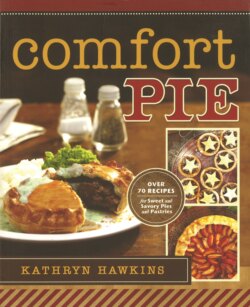Читать книгу Beginner's Guide to DIY & Home Repair - Kathryn Hawkins - Страница 8
Pastry ingredients 1) FLOUR
ОглавлениеProvides the main bulk and structure of any pastry. Wheat flour contains proteins which form gluten, and gluten helps the pastry firm up and crisp when baked. Plain or all purpose white wheat flour is the most commonly used for a standard shortcrust pastry, with the wholewheat (brown) version offering a healthier, more wholesome crust. Wheat flour with added raising agent (self raising flour) is used for a softer textured pastry like suet crust, but if you fancy experimenting, it can be used for shortcrust and will make a crumbly textured pastry which merges into the filling during baking and offers a less pronounced crust.
If you are wheat intolerant, you can use gluten free flours – I have included suggestions and recipes. Pastry made with a gluten free flour will have a different texture but can still provide a perfectly adequate casing for many different fillings. Remember to choose a flour that will combine well with filling flavours for example, some flours like gram (chickpea) have a beany, earthy flavour and are best suited to savoury fillings.
For pastries with layers and flakes (flaky, rough puff or puff) or when a more robust or free standing pastry case is required (hot water crust), a wheat flour with a higher protein content and thus more gluten, is often used. Choose strong plain (bread) or white bread flour for a firmer, crisper result. However, a bread flour with too high a protein content can make a tough pastry that shrinks. Standard plain (all purpose) flour can be used for these pastries too and the results will be slightly softer and flakier in texture; the type you choose is down personal experimentation and taste.
As with all pastry ingredients, make sure you use fresh flour for best results. Store flours in their bags, well sealed, in a cool dry place.
